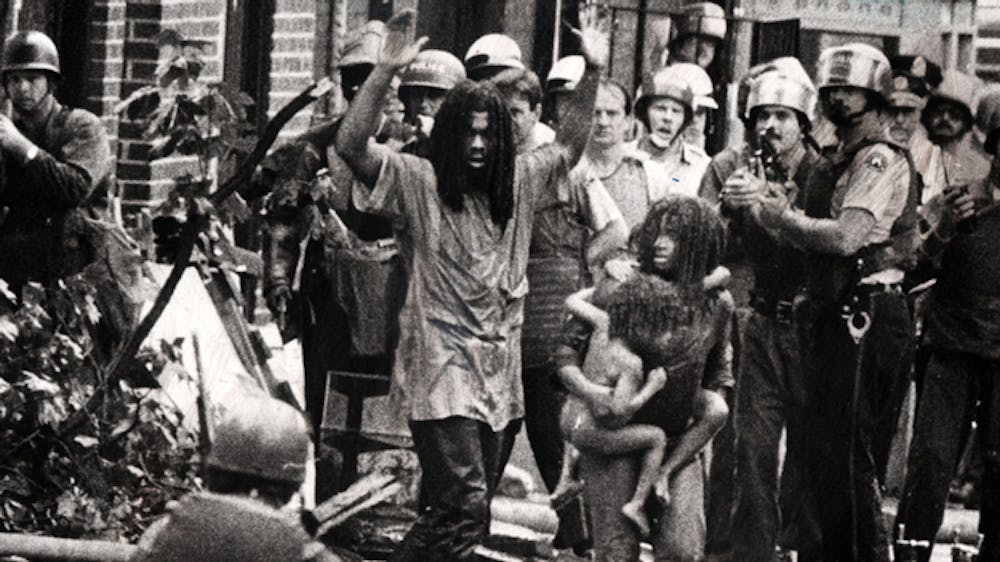The first person we meet in Jason Osder’s documentary, “Let the Fire Burn,” is a young child introduced to us as Michael Moses Ward. We find out, however, that his name was once “Birdie Africa,” a moniker he held for his 13–year childhood with the radical organization known as MOVE. Following the order from Philadelphia city officials to drop explosives onto the MOVE organization headquarters on Osage Avenue in West Philadelphia during a 1985 eviction effort, Michael is introduced as “Michael,” not “Birdie.” His new name is supposed to be a symbol that the traumatic event which killed 11 MOVE members and led to an inferno that destroyed 61 neighboring houses is “over.” He’s expected to be a new person now.
When a film about tragedy is made, sometimes it can feel as if the event has ended—that it was only a single occurrence from which we can move on once we step out of the theater. What “Let the Fire Burn” does differently is what director Jason Osder calls “view[ing] the past in the present tense.” With the use of archival footage, we’re not looking back at the events of the past; we’re viewing them as if they’re still happening. Throughout the film, there is a feeling of continuity that ultimately brings the incident and hearings into the present and reveals to us that May 13, 1985 still isn’t over.
Osder deftly reveals the various relationships in the film: the motives of the city officials, the tension within the police force and the “Birdie” that is still present within the “Michael” we meet in the beginning of the movie. But the film never allows us to feel like the answers revealed are complete. This incompleteness only adds to the realization by the end of the film that the fire is still burning.
Grade: A
Runtime: 95 mins.
See if you liked: “Law and Disorder in Philadelphia”







